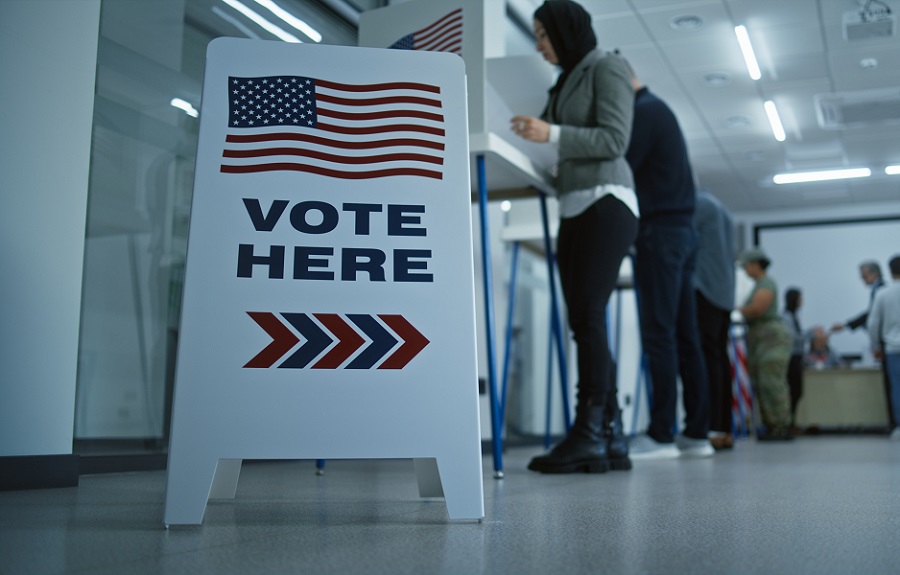Voting & Party Enrollment Statistics

Long Island’s political landscape is increasingly defined by competition and complexity. With nearly 2.2 million registered voters spread across Nassau and Suffolk counties, no single party dominates the region. While Democrats hold a modest lead in voter enrollment, Republicans maintain a strong presence, and a growing number of Long Islanders are choosing not to affiliate with either major party. These unaffiliated voters-often referred to as independents-now represent roughly one-third of the electorate and are playing a larger role in determining election outcomes.
This page provides the latest voter enrollment data available from the New York State Board of Elections, broken down by party and county, and offers context to help understand what these numbers mean for Long Island’s political climate. Whether you’re a resident, voter, journalist, or researcher, this statistical overview gives you a clear, data-driven snapshot of how Long Island’s electorate is segmented-and how political influence is likely to shift in the years ahead.
Region covered: Nassau County & Suffolk County (Long Island, New York)
Data date: November 1, 2025
Source: New York State Board of Elections – Voter Enrollment by County, Party Affiliation and Status
Key Facts & Details
| Item | Detail |
|---|---|
| Geographic Area | Long Island (Nassau County & Suffolk County) |
| As-of Date | November 1, 2025 (latest published enrollment snapshot) |
| Total Registered Voters – Long Island | 2,196,770 |
| Democratic Enrollment – Long Island | 772,307 voters (≈35.2%) |
| Republican Enrollment – Long Island | 680,085 voters (≈31.0%) |
| Other / Unaffiliated – Long Island | 744,378 voters (≈33.9%) “Other” includes all minor parties and voters with no stated party. |
| Main Takeaway | Long Island is closely divided by party enrollment, with Democrats holding a modest edge, Republicans maintaining strong numbers, and unaffiliated/other voters forming roughly one-third of the electorate. |
Party Enrollment by County (November 1, 2025)
The table below shows the latest available party enrollment for Nassau and Suffolk counties, using counts from the New York State Board of Elections. Percentages are calculated from the official totals.
| Region | Total Registered Voters | Democrats | Republicans | Other / Unaffiliated |
|---|---|---|---|---|
| Nassau County | 1,066,935 | 401,974 (≈37.7%) | 324,166 (≈30.4%) | 340,795 (≈31.9%) |
| Suffolk County | 1,129,835 | 370,333 (≈32.8%) | 355,919 (≈31.5%) | 403,583 (≈35.7%) |
| Long Island Total (Nassau + Suffolk) | 2,196,770 | 772,307 (≈35.2%) | 680,085 (≈31.0%) | 744,378 (≈33.9%) |
Note: “Other / Unaffiliated” combines all voters who are not enrolled as Democrat or Republican. That includes voters registered in minor parties and voters with no party selected. Raw county-level figures are drawn from the New York State Board of Elections “Voters Registered by County as of November 1, 2025” enrollment report.
What “Independent” Means in New York
When people on Long Island say they are “independent,” they usually mean that they are not officially enrolled in either the Democratic or Republican Party. In the official voter rolls used by the New York State Board of Elections, this shows up in two different ways:
- Blank / No Party / Unaffiliated: Voters who did not choose any party when they registered. These voters can participate in general elections like everyone else, but typically cannot vote in party primaries unless specific rules allow it.
- Minor Parties (e.g., Conservative, Working Families, etc.): Voters who chose a smaller party line. These are technically affiliated voters, even if they do not belong to one of the two major parties.
Historically, New York also had an Independence Party, which caused confusion. Some voters enrolled in it thinking it meant “independent,” when in reality it was a formal party line. For purposes of this page, Long Island’s large “Other / Unaffiliated” segment should be understood as a mix of true unaffiliated voters and voters in minor parties, all of whom fall outside the two major parties.
Long Island in the Statewide Context
According to statewide enrollment summaries based on the same November 1, 2025 data, New York overall still shows Democrats as the largest single group of registered voters, but the share of voters outside the two main parties has been growing steadily in recent years. Long Island reflects that broader pattern in a particularly competitive way:
- Democrats: A plurality on Long Island, with about 35% of registered voters.
- Republicans: Just behind, at roughly 31% of registered voters.
- Other / Unaffiliated: Roughly 34% of Long Island’s electorate, making them a crucial bloc that can swing close races.
By comparison with parts of downstate and New York City, Long Island is more evenly balanced between the two major parties and has a particularly high share of voters who are not formally aligned with either one.
Why Party Enrollment Matters (and Its Limits)
Party enrollment data is useful because it shows the underlying partisan lean of a region’s registered voter base. On Long Island, the numbers illustrate why the area is often described as a political battleground:
- No single group dominates: Democrats, Republicans, and Other/Unaffiliated voters are all clustered within a relatively narrow range.
- A large unaffiliated/other category means many voters are not locked into traditional party lines and may be more open to ticket-splitting or candidate-focused voting.
- Campaigns must speak to the “middle” – not just energize their base – in order to win close county-wide or regional races.
However, enrollment is not the same as election results. Actual outcomes depend on:
- Turnout: Which groups show up in greater numbers in a given year.
- Local Issues & Candidates: Strong or weak candidates can outperform the underlying registration numbers.
- National Trends: Presidential or midterm waves can shift behavior even in areas with relatively stable enrollment.
For that reason, party enrollment should be seen as one important data point, best interpreted alongside turnout statistics and election results.
How These Numbers Were Calculated
The figures on this page come from the New York State Board of Elections’ official “Voters Registered by County as of November 1, 2025” enrollment report. That report provides, for every county in New York:
- The number of registered voters by party affiliation.
- Totals for each county.
For Nassau and Suffolk Counties, the official numbers were compiled and summarized into a public data table and then used to compute the percentages shown here. The Long Island figures are calculated by adding together the Nassau and Suffolk totals:
| Category | Nassau County | Suffolk County | Long Island Total |
|---|---|---|---|
| Total Registered Voters | 1,066,935 | 1,129,835 | 2,196,770 |
| Democrats | 401,974 | 370,333 | 772,307 |
| Republicans | 324,166 | 355,919 | 680,085 |
| Other / Unaffiliated | 340,795 | 403,583 | 744,378 |
Percentages are calculated by dividing each category’s count by the total number of registered voters in the county (or in Long Island overall) and rounding to one decimal place.
Long Island Party Enrollment by Percentage
The table below shows how Long Island’s registered voters are divided among major political categories. Percentages are based on the most recent enrollment snapshot as of November 1, 2025.
| Category | Percentage of Long Island Voters | Raw Enrollment |
|---|---|---|
| Democrats | 35.2% | 772,307 |
| Republicans | 31.0% | 680,085 |
| Other / Unaffiliated | 33.9% | 744,378 |
Nassau vs. Suffolk: Party Enrollment Comparison
Although both counties are politically competitive, voter enrollment patterns reflect key differences:
| Party / Category | Nassau County | Suffolk County |
|---|---|---|
| Democrats | 37.7% | 32.8% |
| Republicans | 30.4% | 31.5% |
| Other / Unaffiliated | 31.9% | 35.7% |
Note: Percentages are based on registered voter enrollment as of November 1, 2025, from the New York State Board of Elections.
Using This Page as a Reference
This page is intended to serve as a reference hub for political and civic statistics on Long Island:
- Residents and journalists can quickly see how the electorate is divided by party enrollment.
- Students and researchers can use the numbers as a starting point for deeper analysis of voting patterns, turnout, and demographic trends.
- Local organizations and campaigns can better understand where the largest pools of unaffiliated voters are likely to be.
As the New York State Board of Elections updates its enrollment reports, this page can be revised to reflect new totals and shifting political dynamics across Nassau and Suffolk counties.

